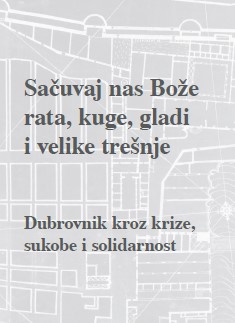Sudbina samostana i redovnica nakon potresa 1667. godine
The Destiny of Dubrovnik nunneries after the Earthquake of 1667
Author(s): Minela Fulurija Vučić
Subject(s): Christian Theology and Religion, Physical Geopgraphy, Local History / Microhistory, Government/Political systems, Security and defense, Victimology, 17th Century
Published by: Hrvatski institut za povijest
Keywords: nuns; nunneries; Dubrovnik; Earthquake of 1667;
Summary/Abstract: On April 6th, 1667, Dubrovnik was hit by a disastrous earthquake. Seven nunneries were destroyed in the earthquake and the eighth, the Convent of St. Peter and Paul, burnt down in a fire that broke out as a consequence of the earthquake. The data on the number of casualties are contradictory; therefore, so are the data on the number of casualties among the nuns. Due to the vast number of casualties suffered by the nunneries and nuns, there was the issue of their fate after the earthquake. Archbishop Torres took advantage of the temporary absence of authority and decided to leave for Ancona together with the nuns. In his report on the journey he claimed that he had arrived at this decision because he deemed the nuns vulnerable as the government was not able to provide them with adequate accommodation and the necessary enclosure. However, one might argue that the archbishop, in making this decision, was actually more worried about himself than the nuns. As he was a representative of the head of the Church, should he not have stayed and provided spiritual comfort to the suffering population, especially, as he himself states in his report, because the survivors among the people were happy to see him alive? What prevailed was probably the fact that Archbishop Torres, just like any other foreign archbishop, was not satisfied with his post and had not been able to fully integrate in the town or with its people, the majority of which did not speak Italian. Maybe the fact that someone needed to take care of the nuns who had survived was his perfect excuse to leave the Republic. Although the nuns were extremely well received in Ancona and were opposed to an instant return home, the government wanted to bring them back as soon as possible. Apart from the intimate feelings of concern for their daughters, sisters and aunts, there were economic reasons that motivated the government as well. Nunneries had great shares in Italian banks and as long as the nuns were in Ancona the interest payments, which the government wanted to use for the reconstruction of the convents, were suspended. Patriotism may also have been a motivation for a quickest possible return of the nuns as the government wanted to have the nuns on their own ground, thereby showing that the earthquake had shaken them, but had not destroyed their ability to look after their citizens. Their eventual hurry in bringing back the nuns, whom they had, at first, accommodated at the Franciscan monastery in Ston, is also documented by the letters the nuns sent them, in which they mostly complained about the poor accommodation and food.
Book: Sačuvaj nas Bože rata, kuge, gladi i velike trešnje. Dubrovnik kroz krize, sukobe i solidarnosti
- Page Range: 91-105
- Page Count: 15
- Publication Year: 2018
- Language: Croatian
- Content File-PDF

